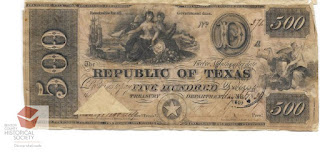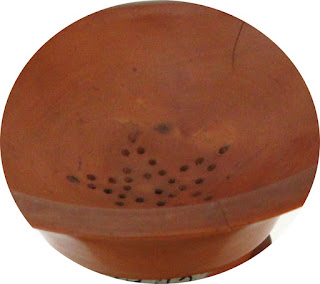This is one of a number of notes issued by the Republic of Texas that are part of the Benton County Historical Society’s collection. In the lower right corner is the signature of Sam Houston, the first President of what had become a separate country.
By 1835, about 30,000 people had migrated from the United States to the Mexican province of Texas, where they outnumbered native Mexicans by about ten to one. Increasing differences between this group and the Mexican government over slavery, limits on immigration, and representation led them to declare their independence. In 1836, the settlers defeated the Mexican army sent to quell the rebellion. Mexican President, General Santa Ana, was captured but was released when he agreed to recognize Texas independence.
A new constitution established Republic of Texas. Sam Houston was elected President and the
Texas Congress petitioned, unsuccessfully, for annexation to the United States.
In 1837, the Texas government issue notes for one year which paid ten percent
interest. This allowed the government to
pay its bills. Residents gained
something they could use to pay taxes or import duties as Texas would not
accept notes from U. S. state banks. The
Texas notes could be endorsed and used in commercial exchanges but many were
held for investment.
In 1839, the Republic began to issue paper currency. These notes, payable in one year to the bearer, earned no interest and needed no endorsement. To make counterfeiting more difficult, these notes were also printed on the reverse with a red design and so were popularly known as “redbacks.”
Because someone in the past had pasted the notes onto paper, the red design is now only barely noticeable on the notes in the Benton County Museum's collection. The triangular cut near the bottom was one way the government canceled the note once it had been redeemed.
The Republic of Texas also printed “change notes” in small denominations ($1, $2, and $3) which were easily used as money for items other than paying taxes
In 1845, the Republic ceased to be when Texas was finally admitted to the United States and so no more Texas notes were printed.
By
Martha Fraundorf, Volunteer for Benton County Historical Society, Philomath,
Oregon











